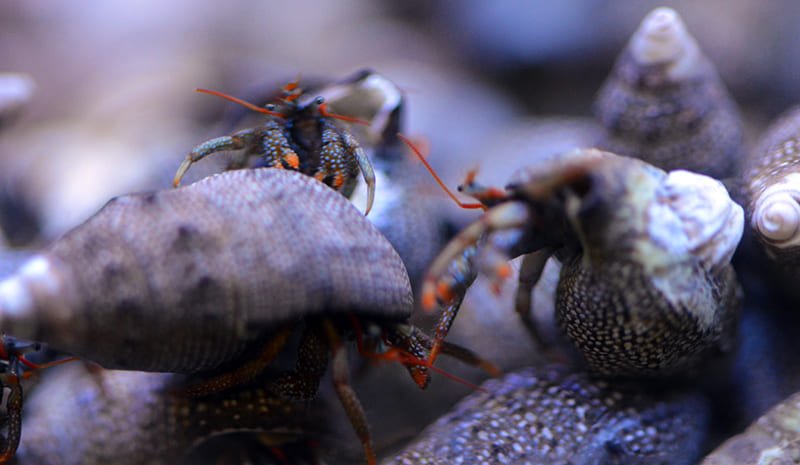A Valuable Addition to Reef Aquariums
Reef aquariums are captivating ecosystems that showcase the vibrant and diverse marine life found in coral reefs. Among the many fascinating creatures that can be added to enhance the beauty and balance of these aquariums, the red-legged hermit crab stands out as a valuable and beneficial addition. In this article, we will explore the characteristics of the red-legged hermit crab and the numerous benefits it brings to reef aquariums.
Appearance and Behavior:
The red-legged hermit crab (Paguristes cadenati), also known as the Halloween hermit crab, is a small, colorful crustacean that hails from the Caribbean. Its distinctive appearance includes bright orange or red legs, a reddish-brown carapace, and striking blue eyestalks. These crabs are popular in the aquarium trade for their unique and attractive appearance.
Red-legged hermit crabs are known for their active and social behavior. They are excellent scavengers and can often be seen exploring the aquarium floor, rocks, and corals in search of detritus, algae, and leftover food. Their constant movement and interaction with the environment add a dynamic element to the aquarium, making them a joy to observe.
Benefits of Having Red-Legged Hermit Crabs in Reef Aquariums:
Algae Control: Red-legged hermit crabs are voracious algae eaters. They play a crucial role in controlling and preventing the overgrowth of undesirable algae in reef aquariums. Their continuous grazing helps maintain a healthy balance, preventing algae from smothering corals and other marine life.
Detritus Cleanup: These hermit crabs are efficient scavengers, feeding on organic debris and detritus that accumulates in the aquarium. By doing so, they contribute to the overall cleanliness of the tank, reducing the risk of water quality issues.
Sand Aeration: As they move around the aquarium, red-legged hermit crabs often sift through the substrate. This natural behavior helps aerate the sand, preventing the formation of anaerobic pockets and promoting a healthier environment for beneficial bacteria.
Coral Health: Red-legged hermit crabs are generally reef-safe and can coexist with a variety of corals. Their constant movement and cleaning activities help prevent debris from settling on coral surfaces, promoting better water circulation and overall coral health.
Entertainment Value: Beyond their practical benefits, red-legged hermit crabs add a lively and entertaining element to the aquarium. Watching them explore, interact, and occasionally engage in shell-swapping behavior can be a source of joy for aquarium enthusiasts.
The red-legged hermit crab is a valuable asset to reef aquariums, contributing to the overall health and aesthetics of the ecosystem. With their striking appearance, efficient algae control, and beneficial behaviors, these crustaceans make a positive impact on the well-being of the tank’s inhabitants. Consider adding red-legged hermit crabs to your reef aquarium for a colorful, active, and ecologically beneficial experience.

